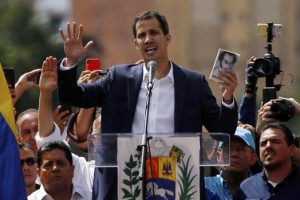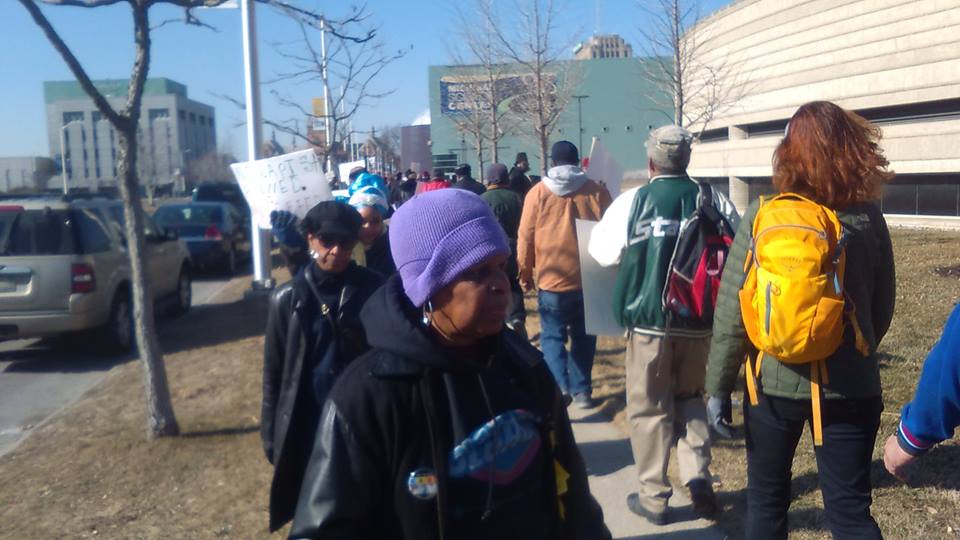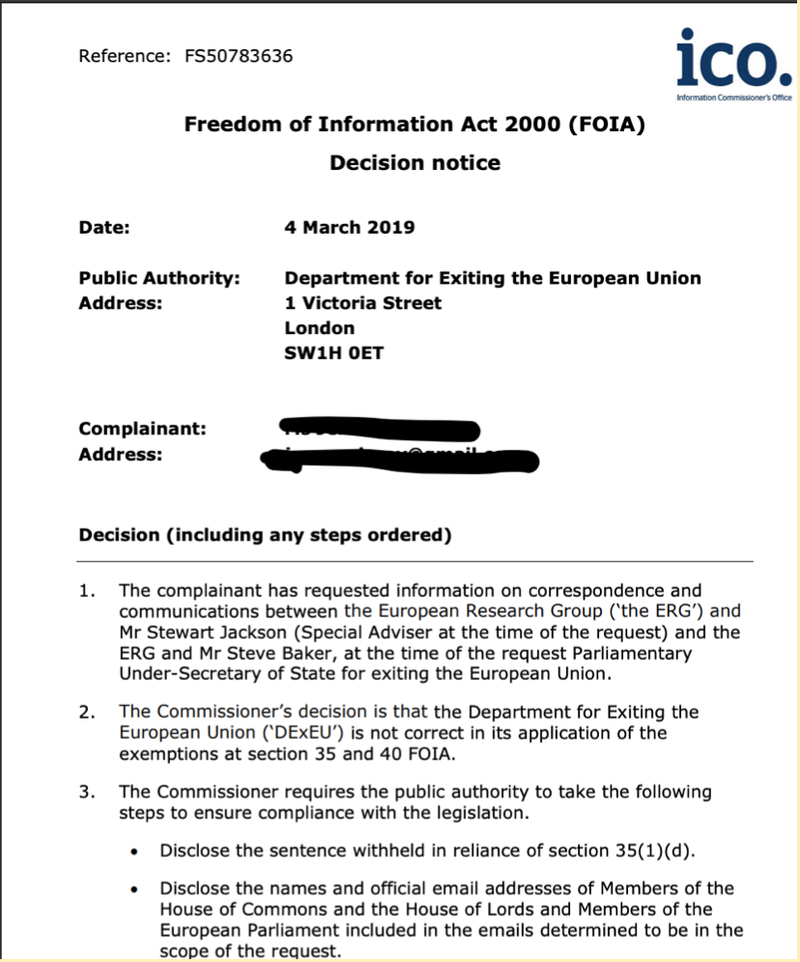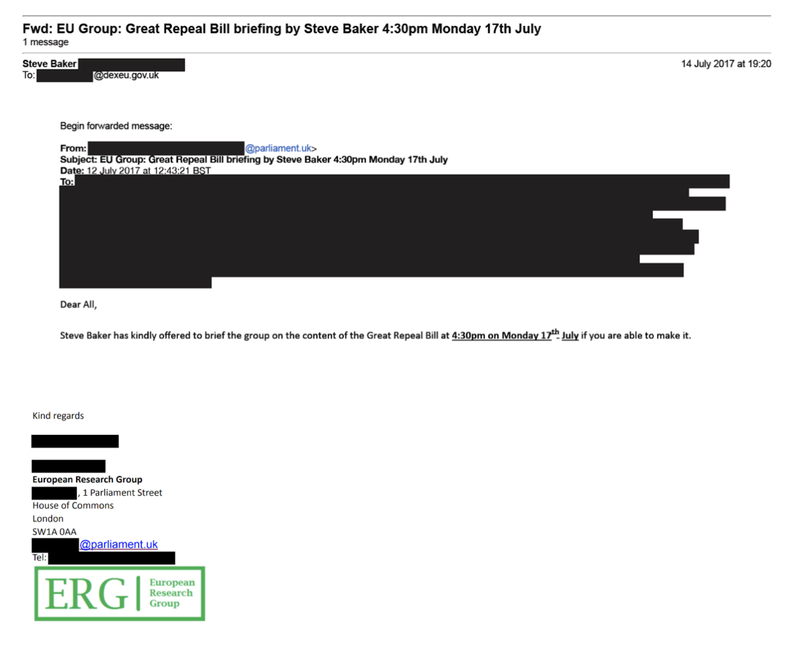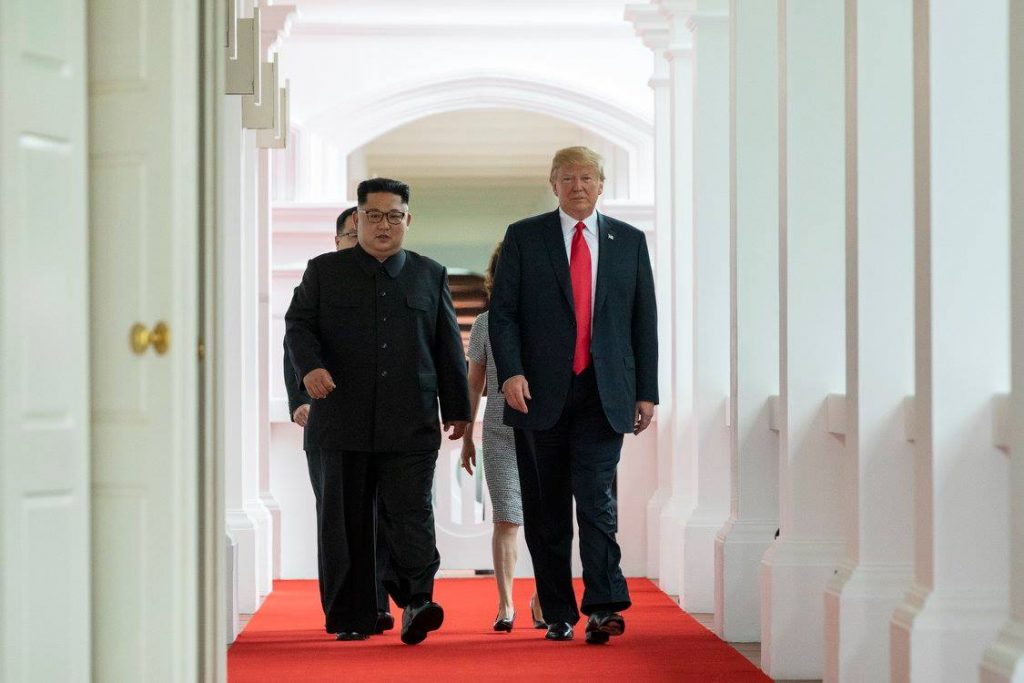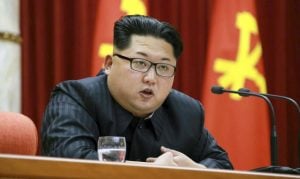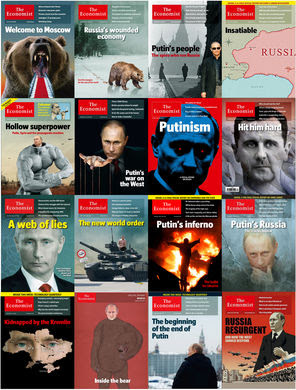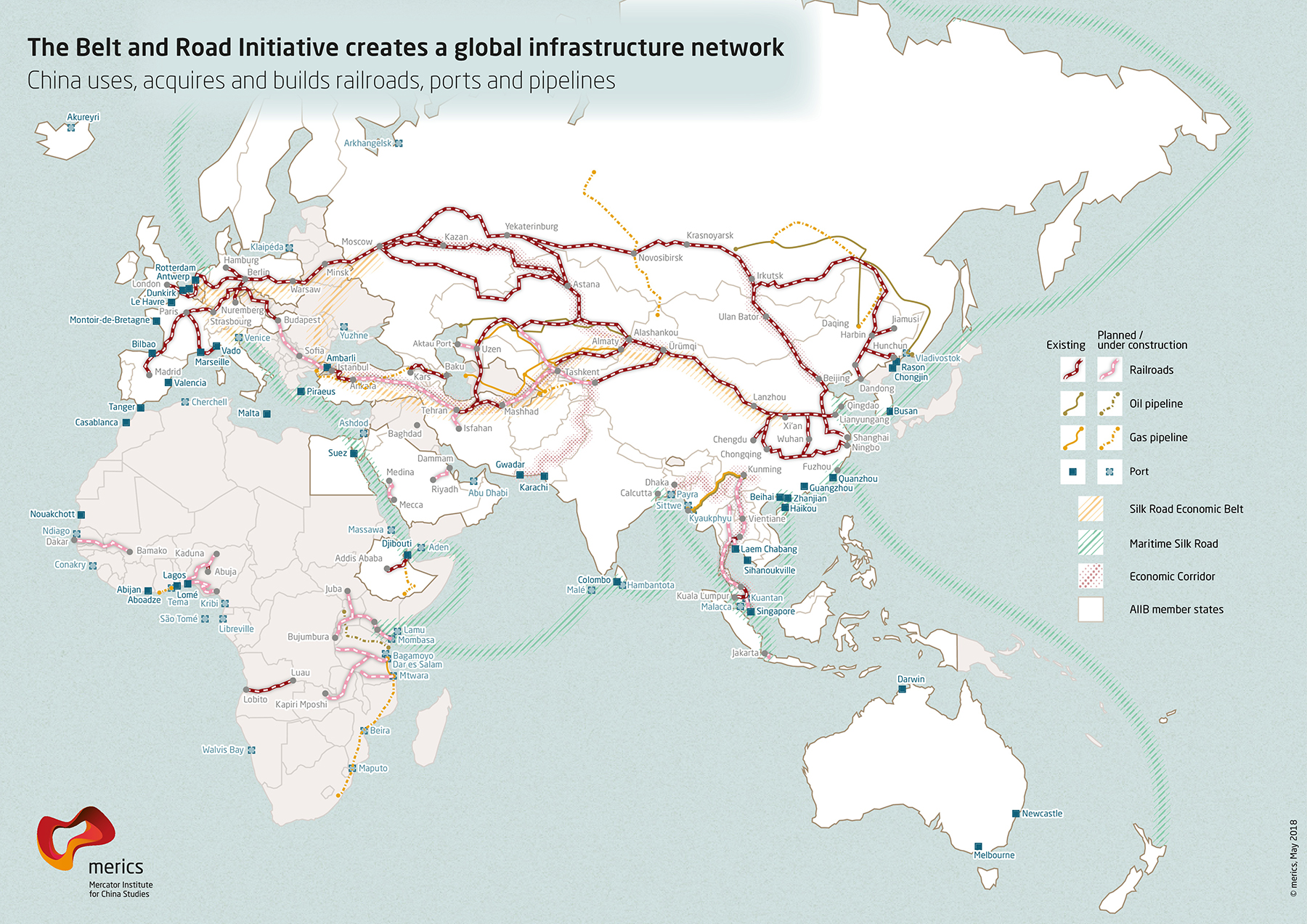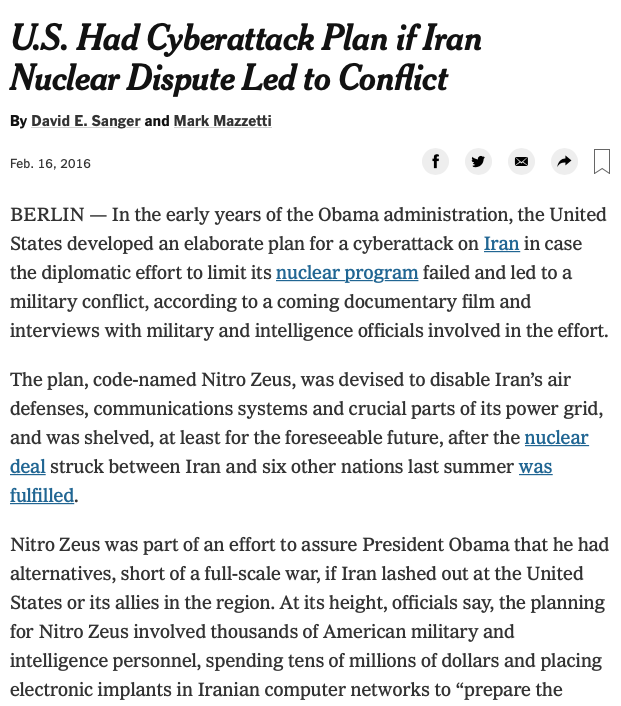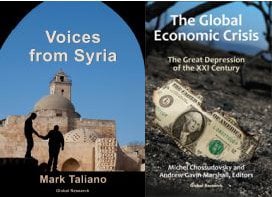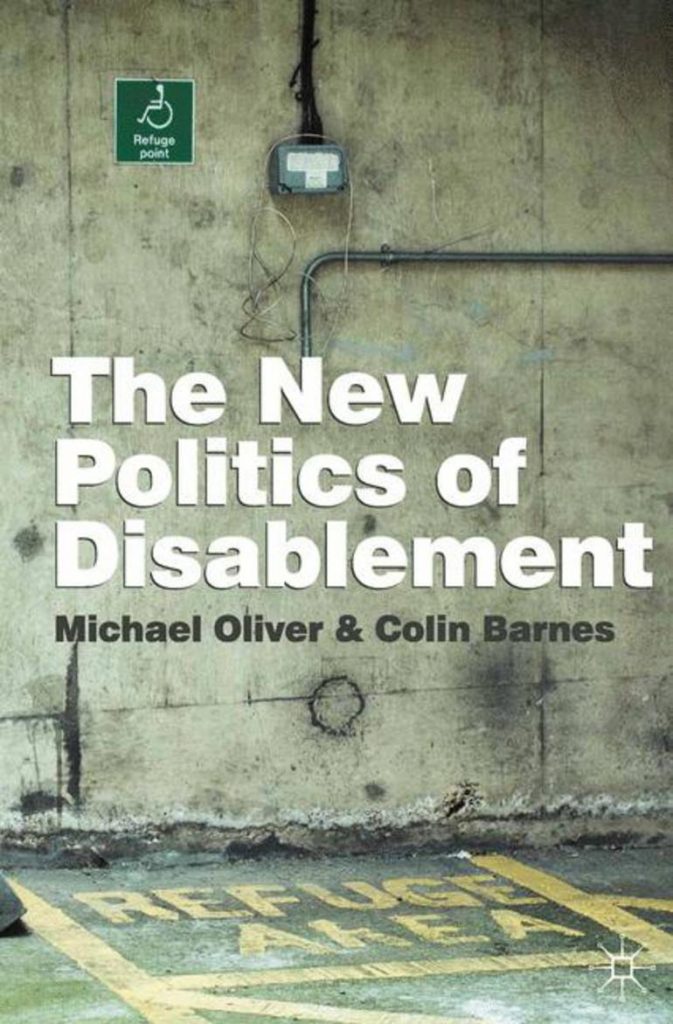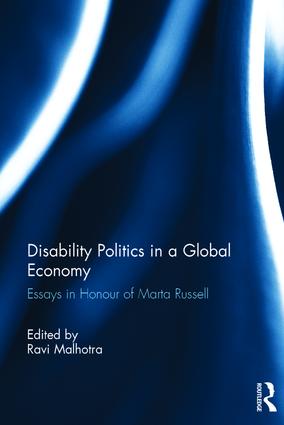“Democracy Has Just Been A Word…Never Been An Act!” -Wall Graffiti / 2016 Thailand Military Coup.
5:05 AM. February 4, 2012. It’s almost pitch dark. No one has slept this night. The only morning illumination comes from scores of dimly glowing dots of blues, greens, yellows, reds or orange inside a patchwork of hundreds of still standing tents. Most sit empty for the first time in months; a lamp left on during their vacancy. Nearby, the tall, jet-black and ornate sidewalk lamp poles lining the concrete walkways of McPherson Park here in Washington D.C. provide a few additional stage lights, their bright-white cones casting a single spotlight on their foreground.
Under these spotlights, peering nervously across this scene into the depths of the grey-on-black streaks of the approaching morning, many small groups of protesters stand huddled together, as if for warmth, against the brisk, sub-zero February morning as the first warning flashes of dank sunrise announce this day. The night’s silence is broken as the voices from these groups slowly rise. There is anxiety in the sound. Nervousness. And…
Fear. Fear of how bad this day would turn out to be. Yes, the tents were all still there, for now. The stalwarts had stayed out of principle. Their hearts and minds would not be swayed. This morning, they huddled, shoulder to shoulder in their groups, hot tea, coffee or a freshly light cig cupped in hand; finding support within their waning numbers. All knew as they glanced about the fringes of the park, second-by-second… today was going to be a very bad day.
The cops are coming.
*
In the next few hours, made-up of minutes that wore on in slow-motion horror, it would all be over. Finished. All that once was and could have been of the last outbreak of effective democratic American activism would be stripped bare; stomped into submission, its rattling bones, like the hundreds of nearby multi-coloured tents, cast into a huge trash can of US history thus offended. By the end of this day, American activism would be dead. Its leadership dead as our collective cause. The one we, who still stood our ground this morning, shivering, used as a nationwide rallying cry to everyone who could still hear and listen. For months we had shouted, often screamed that name, that dream, that goal, that one call to action. That threat. The one we all so defiantly called, “Occupy.”
Yeah, American activism would be dead this day. Dead as the American dream.
The one we were all trying to save.
The Last Victory for American Activism
“Protest is when I say I don’t like this. Resistance is when I put an end to what I don’t like. Protest is when I say I refuse to go along with this anymore. Resistance is when I make sure everybody else stops going along too.” ―Ulrike Meinhof
This February morning, all had reason for fear. We all knew that we would not win on this day. The First Rule of Democracy – the numbers, the ratio-cops-to-activists– did not bode well for a victory in our nation’s capital this morning. But, the First Rule had beaten them back, beaten them badly, once before. We knew that the cops remembered, as some of us did now, that turbulent morning aeons ago. Two months before.

Some of us huddled here shoulder-to-shoulder had first been in Los Angeles at America’s biggest Occupy camp at City Hall. Oh, the cops came to kick us out on that morning, too, and for the exact same reasons. But it took ‘em two tries to do it!
The memory of that great day: that incredible night until morning when we, those of us who finally stood up for ourselves, and for others, against what we knew was festering all around us. That one morning when… we finally won. There, under the lampposts, those of us who were there that day in L.A. told the fable of that glory day to those who had only heard about that Sunday. That day too long ago when we, together, kicked those cop’s fucking asses.
Without firing a shot or throwing a punch we, the Occupiers in LA, had showcased what Occupy actually stood for to our nation. A reminder of the First Rule of Democracy. That day, we used our collective middle fingers to give the bastards a whipping they would not forget.
Now, we shivered and prepared for what we all knew would be our own ass-kicking to come.
“They’ll have to drag me out…” was said again-and-again to draw courage on that morning, too. That story of LA brought needed smiles to nervous faces as it was told. All the while, all eyes darted about in the day’s slow illumination, watching. Listening.
*
It was the morning of that great day in November 2011. Driving south towards San Diego city, like so many other southern Californians, the news of the day’s eviction of the Los Angeles Occupy camp- the biggest in the nation- was broadcast over the car radio. Trouble was brewing and the cops were massing on the fringes of city Hall grounds to begin the threatened eviction.
Unless…?
Yes, on that Sunday Nov. 29,we, the people: the disaffected, the poor, the homeless and those of us who honoured our conscience and still believed in the possibility of changing our world for the better would, as one, look right through the grey-tinted face shields and into the eyes of 1000 black jacketed, riot-gear-clad cops. Not one of us backing up… one… single… inch.
The eviction notice of Occupy LA spread like a herald’s call to action. They came.
It was time.
Southern California flooded into Los Angeles City Hall. By noon over three thousand. By 4 PM four thousand. By the time the biggest General Assembly (GA) ever was convened on the city hall steps, the crowd swamped the City Hall grounds from centre stage of W. 1st Street to the side streets of N. Main and N. Spring., nearing 6000 strong. I was standing at the top of the massive stone entryway steps looking down at the milling crowd as the twilight of this night approached, taking pictures by the score and smiling so hard the edges of my mouth cramped.
This was a real protest.
Finally.
The energy was electric, infectious. The crowd was getting ever louder as calls for “Mic Check” were ignored, until calm was finally restored and the first speaker and the laborious Occupy democratic process was introduced to the crowd. “Shut the fuck up!” could be heard from many well-intentioned Occupiers demanding a return to civility and decorum- and silence- as others shared stern looks with the few remaining offenders until the message of respect was universally received. Quiet.
“The cops ain’t gonna be able to control this mob, tonight,” I heard a voice remark just off my right shoulder. This was a prescient comment indeed. It came from a City Hall cop standing right next to me. “Those cops move… it’s going to be a full-blown riot.”
Indeed.
He was referring to the hundreds of cops-over a thousand – with more arriving by the hour– all in full black riot gear, who lined all four streets all the way back to W. Temple. Standing almost shoulder to shoulder they surrounded the entire City Hall grounds and every side street and alleyway. Unlike the affable cop near me, these cops were here to evict everyone, by force. From the vicious, penetrating stares they provided to anyone within eyeshot, they were absolutely salivating at the chance to get started.
But there was just one problem. Actually six thousand problems… and growing. Those damn Occupiers, many who stood deliberately and directly in front of many a cop, just inches away, staring back. They were growing in number. And getting louder. Much louder. All waited for the moment when all those cops took their first step forwards. And, then…
No one was here to back down tonight.
It was time.
It had only been two months before that LA city council members were writing proclamations in favour of Occupy and singing its praises as a new form of non-violent, democratic protest. They had invited Occupy to stay on the city hall grounds. The Occupiers were welcome to come and stay…and protest, or so they said in glowing oratory. And the LA camp grew, becoming the biggest in America with over 1000 tents and 1500 Occupiers daily. Zuccotti in N.Y.C and McPherson and Freedom Plaza in DC were mere postage stamps by comparison.
Occupy within weeks became so much more than merely an opposition movement. Occupy became an example. By providing social services long since gutted from local society, the example Occupy showcased in many ways was the only example of society’s remaining obligation to the unfortunate. LA streets are a very unsafe place to sleep and the City deliberately provides little assistance in the failed hope that the homeless will finally move on. Somewhere. However, all were at least safe and could eat at the Camp. Despite the drug abuse, assorted low-lifes and nefarious side of the Occupy camps, violence was virtually unheard of. Non-violence, tolerance and diversity were embraced and preached as an integral part of Occupy. A communal spirit pervaded the camps and this included an educational component, as small symposiums, lectures and talks on assorted democratic principles were held throughout each day for any who chose to sit in and learn.
These were exciting days.
Sunday in the Park With Occupy
“Education is the Most Powerful Weapon One Can Use to Change the World” – Nelson Mandela
To understand the effectiveness and leadership that the Occupy camps so quickly provided nationally, all one needs to have done was stop into the camps, as so many did, on any Sunday morning.
Occupy camps had sprung up in more than a hundred cities and towns, big and small, across America. Zuccotti Park, New York City, got most of the press- and the money- during those crazy days when it seemed that activism had finally returned to leading the conscience of the nation. Every state Capital city had an Occupy Camp and local politicians sang the praises of the new populist form of inclusive democracy and non-violent opposition.
Yes, like LA, these camps were an amalgam of passionate activists, the homeless, drug abusers, and the temporarily interested. However, to a suddenly threatened Government not used to effective opposition, the Occupy camps were a much bigger problem than the Occupiers themselves realized. For these camps from sea to shining sea were, behind the scenes, just weeks away from having a new separate national Occupy political platform.
From the massive Los Angeles camp of well over one thousand to McPherson Park in D.C. down to the small camps of Austin, TX and San Luis Obispo, Calif, Sunday was the most special day of every week. The camps on these days were a true sign that the opposition Occupy had created was working. And, support was growing.

Beginning in the mornings each Sunday and continuing often until past dark, people came from everywhere. They came to the camps. Many said, they “had to.” Their obligation.
It was time.
Yes, they showed up at the camps. Every type of American. Race? Sex? Religion? Didn’t matter. They came with food to share. Freshly baked cakes, cookies, little tarts. Hot soup. Cigarettes or a bit of weed to share. They came with clothes and donations. There were always extra coats and jackets available to newly arriving Occupiers.
Each and every visitor came in spirit. Looking across the camps, conversations in groups took place among the tents or on the sidewalks next to the monuments, lampposts, and street corners, the participants locked together in impassioned, but collegial discourse while others listened carefully. Many who were interviewed spoke of their personal need to be involved in any manner, even for one day, but also of their need for accurate information due to their distrust of the media. It was satisfying to see so many people coming together. The camp took on a conspiratorial, hushed, tone. This reporter interviewed many people at McPherson who went to work daily but stayed in their own heat-less tent- in February- every night.
Then there was the Occupy platform. Across the breadth of the nation’s camps, all were trying via the slow laborious machinations of Occupy democracy and inclusion of all, to effect a national platform that would be presented to all Occupiers for a national vote. And then? A new political party. This, by the very nature of Occupy’s all-inclusive democratic proceedings, was a daunting task indeed. But one embraced with hope. Not the fake political kind. Real Hope.
From the vantage point of those venturing to the Camps, this was American society renewed. Discussion, disagreement, tolerance, inclusion, love and a spirit of cooperation for the good of all. Everyone. All welcome. These societal tenets had been virtually destroyed by an ongoing capitalist set of self-serving US governments over the past forty years. There was now an optimism that pervaded the many impassioned conversations and it shined on the faces of those who roamed the camps on these Sundays.
We were starting to believe.
However, an Obama administration predisposed to the continued gutting of what little was left of American social responsibility, had a decidedly different view of Occupy. To the “primal forces of nature” thus challenged, this was not democracy renewed. This was not non-violent protest. No, in a nation of purchased leaders Occupy was to them a different example of leadership.
It was a threat.
*
With LA City having almost no food program for the homeless, it was the Camp that filled this fundamental role as well. This November night, as the emotions of this night, rose and fell, I spent several hours in the company of Daniel T. as we watched for the cops to begin this night’s attack from our vantage point high up on the top of the City Hall steps. Dan, a thirty-year-old chef at a local restaurant proudly told me how he had organized the massive tent kitchen that lined the sidewalk of W.1St. street and how he and forty plus volunteers were preparing and cooking a free breakfast and dinner for 1500 or more. Everyday. Anyone who was hungry was welcome.
This evening’s dinner had been cancelled.
Each morning he and his old yellow Toyota pick-up would be down at the LA Wholesale Produce markets of Central and Olympic Streets in downtown. There he spoke with dozens of wholesale vendors asking for bruised or slightly blemished produce. The response was tremendous, he said, and each morning he returned laden to gunwales with the day’s ingredients. Augmented by other food donations and a tiny donated budget, he and the other cooks turned this into a basic, but the nutritious meal, so that no one had to go hungry. Why? “Fuck man…it’s the right thing to do, right? That’s why I’m here.”
But as the winter closed in, the media did its job and echoed the many politicians who had already turned tail on Occupy. Yes, there were drugs. The camps were noisy and sleep was not always easy. Garbage collected despite volunteer details performing clean-up. The haphazard set-up of the hundreds of tents was a tattered assortment at best, but never once did I see a rat. Well, except for the ones who appeared on the City Hall steps asking us to now take our game of democracy and go home.
Then the eviction notices came out.
Typically, the cops arrived in the wee hours of Friday morning, posting the single page eviction notices on tents, trees, trash cans and street signs as they stole quietly through the Camp in groups of three. Then the alarm of the day went off. That morning everyone knew what they did not, all these weeks, want to admit would ever come: It was on!
The stated eviction deadline was Sunday at 5 PM. Everyone out. No exceptions. Out or be arrested.
Well… maybe.
That Powerful Sweet Smell in the Morning. Smells like… Victory!
“There is absolutely no greater high than challenging the power structure as a nobody, giving it your all, and winning!”― Abbie Hoffman
The media which had also turned so quickly on Occupy was also, this day in LA, spoiling for some high news ratings and looking forward to some good old fashioned police brutality. Coverage of the pending eviction was all over the news and scores of reporters roamed the LA camp, acting cool, but didn’t give a shit about the truth of this national story. Well, that was their job. Their news copters hovered overhead until the cops cleared the skies in preparation.

But, all their coverage instead brought out the city and the surrounding counties. By Saturday, hundreds more had come down with their tents and donations. But, on Sunday when 1500 Occupiers seemed about to get very seriously worked by the ever-mounting police militia, for some of conscience and pent up outrage, this all was too much for one to stand by and merely watch-on in sympathy from afar.
That day and that longest of nights I talked with dozens who had driven to be at the camp that day for one simple reason: to finally say, “No!” Like this reporter, they had made the first move, decided to do something, after far too long.
It was time.
*
That Sunday night seemed to last forever on a razor’s edge. One wrong move by a protester and the Cops would have devolved into an orgy of mace, batons and tasers. Guns? One attack by any one of the cops would have thrown all that pent-up and frenzied kinetic energy, outrage, and desperation of the 6000 Occupiers raining down on these political henchmen en mass.
As it approached 4 AM of Monday, the tete-a-tete remained nose to nose. Bullhorns from the cops attempted continually to intimidate the protesters into leaving, while bullhorns from the Occupiers and the banshee screams from the protesters answered their challenge. The morning was coming.
From atop the City Hall steps we all agreed that the cops were not going to let this night continue for long. The protesters still struggled out loud with their personal moral dilemma: whether to get out of camp beforehand, or continuing to stand in unison, using one historically successful democratic tactic: The First Rule of Democracy.
By now, the crowd undulated like some kind of massive wounded animal writhing in preparation for one last gasp of life before death. As cop cars screamed down the streets scores of bicycle riding protesters suddenly whirled towards them circling the grounds on the perimeter streets in renewed defiance, pedaling furiously. Small groups, getting bigger as they attracted participants, prepared for their own pending defensive actions. Couples boldly walked the perimeter sidewalks, arm in arm, showing the cops that they were scared of them no more.
Bullhorns bellowed from the phalanxes of cops. The perimeter boundaries on all four streets became solid; twenty deep with protesters on all sides as the defences of personal liberty squared off inches from the masked all-black pigs. The knife edge was literally drawn: The street gutter of oppression right before the grass-fringed sidewalk of resistance.
Now, one-by-one, Occupiers old and new linked hands, just feet from the police front lines in a show of solidarity- an unbroken chain- that surrounded the entire grounds. More than a half-mile in circumference. Organizers called again and again for calm as the cops bellowed for them to leave… or else! On the four sidewalks, the front lines of the cops and the protesters stood inches apart, face to face, nose to nose. The cops played with their nightsticks or fingered their cans of mace threateningly. The protesters returned the threat with the one weapon so hated by every cop in attendance… the middle finger of a self-confident smile. Oh, they all wanted to beat all of us to a pulp and were begging to see the festivities begin in earnest. Some had been rooted to the same spot for hours, wordless, unsmiling… vicious.
Suddenly, 5:35 A.M. A historic roar. Thousands, yes thousands, of spontaneous cheers erupting in unison across the grounds of City Hall. A cacophony echoing off the surrounding concrete buildings. The cheers of the thousands of us who had- that very moment- seen with our own eyes the unimaginable, what we had all thought was impossible that night. What we had all silently prayed for. These cops, after more than eighteen hours of intimidation and a monstrous show of force… they now turned on their heels in unison… they went backwards.
They went home!
Victory! Our victory! A national victory. For those, we were fighting for and the ideas we all shared. It was a very great morning. It was thrilling. It was unbelievable… to be able to “believe” in something once again. After so, so long.
On this crystal blue southern California morning, I walked through the crisp slowly warming air swinging in circles of joy around lamp posts and parking meters one-by-one on the long trip back to my car. The cops were still everywhere; on every side street and alleyway, all standing in clusters near line after line of cop cars of all shapes and sizes. They grimaced, staring at me as I paraded my reverie before their nasty faces. I considered my own middle finger as a final message before disappearing from their sight, but then instead laughed out loud, guffaws of satisfaction and happiness. For I realized that today, this day, we had all already given them- every single cop- the best middle finger possible.
But, in the eternal optimism of that amazing morning, none of us could know that this victory would be the last- ever- for non-violent American activism.
Yeah, the LA cops came back on the Tuesday and stomped us real good. But they still proved the First Rule of Democracy. That day, the inverted ratio of cops to protesters was 4:1. The wrong way, this time.
They breezed through the camp on Tuesday in what could only be described as a full blown attack. Everyone got kettled or beaten, forced into huge groups, except for the wounded, and put on buses that then left for Dodger Stadium parking lot to sit, hour after hour in the heat of the day. No bathroom breaks, no news, just sitting there boiling in the sun.
All the while, the cops surrounded the dozens of buses, standing or leaning on their black-and-whites, glowering. And smiling.
The demise of the LA Occupy camp and the legend of that Sunday were the best advertising Occupy could have had. People across America were now following this leadership. Opposition was rising. City by city, it had found a place to fester and grow stronger. It had found fertile ground and its roots were growing far too quickly. The remaining camps nationwide continued to grow. Activism flourished.
It was time.
The Cold Dead Joke of the Late Night Comedian
“Politics is the only art whose artists regularly disown their masterpieces.” ― Raheel Farooq
Before Occupy became a household name splashed across the daily news cycle, Americans, particularly those whose cynicism had not lost a sense of humour, realized some other undeniable, important and yet often ignored rules about their national condition. One: Their government- from POTUS to Congress- is utterly controlled by capitalist corporations and a fear mongering military that holds complete sway of all their politicians. Two: The media cannot be trusted. Be it Newspaper, Radio, Television or Cable, the media, almost without exception serves the interest of the established regime.
Hence, a very new political affectation arose from a place never before considered as part of the News Media: the snarky, quick-witted late-night comedian as a pundit of popular opinion and a new voice of a disenfranchised nation. What news exec. would have thought that the tiny, struggling cable channel, Comedy Central, would suddenly take a prominent place within mainstream news media and steal ratings and respect from these increasingly propagandized news corporations?
Enter Jon Stewart and protege Stephen Colbert.
Stewart had spent years as host of “The Daily Show.” His acerbic wit and bold, direct – yet cuttingly humorous- interview style slowly manifested into his daily political commentary. From the opening monologue through his cutting duplicitous interview questions, he challenged his many guests, exposing them as being mere pawns in the system he regularly mocked to the growing glee of his attentive viewers. As the show grew in popularity Stewart’s rendition of the daily news and current events became a more trusted voice in the wind of media lies and propaganda. Not surprisingly, The Daily Show became one of the top-rated shows on cable TV with millions tuning in each evening. It became more than obvious that Stewart knew very well the power he had gained in honestly exposing the lies of the status quo and his nightly demeanour brimmed with confidence. But his was something more than that… something that became more and more apparent as the Daily Show sharpened its collective sword of political humour. Stewart’s persona was no longer mere comedy. It was, now, leadership.
Many forget that once Walter Cronkite, the career old-school journalist and decades-long anchor of the CBS evening news, was considered the most trusted man in America. In a by-gone era when news was based substantially on facts, on-scene reporting, two-sided analysis and competition among the big three networks, CBS, ABC and NBC, Cronkite exemplified the highest standard of news. Unlike, the teleprompter reading, make-up slathered, talking heads currently featured across all news media, in a long-gone world full of take-no-prisoners, gumshoe journalism, Cronkite had risen the top, and he had earned it the hard way. More important than Cronkite’s eventual legacy as an icon of American news, when he retired on air at the end of his final “The CBS Evening News with Walter Cronkite,” the nation across the breadth of American media knew that “news” had lost more… it had lost a leader. Never to be replaced.
As trustworthy American journalism began its slow but steady transformation into one national American Völkischer Beobachter, the networks were replaced in prominence by cable news and then cable news dutifully descended into what it has become today: Entertainment propaganda for dullards designed to maintain wholesale ignorance and the authoritarian status quo control of same. Two decades on from the Cronkite era, what little intelligence that still remained in America was hungry for news that confirmed their growing suspicion that… we’re all fucked.
This left the news door open for Stewart and his political variety show to become a similarly trusted voice. Like Cronkite, a large portion of the nation gravitated to his words and political commentary because he, too, was offering the truth. Hell, it had to be the truth, ’cause no one else was saying it!
His eventual sidekick, Stephen Colbert, a man of incredibly gifted wit and a talent for spontaneous, unscripted, ad-lib humour worked his occasional hilarious five-minute political parodies into being a regular feature on Stewart’s show. Colbert was a different sort than Stewart and entered the show at a time when The Daily Show had already begun to morph into a political force and leadership that commanded ever-increasing viewership because of it. So the show was ready for Colbert and his brand of hilarious, deep cutting, if not hurtful, political brand of humour. Colbert’s style augmented Stewart’s shtick perfectly. Not surprisingly, Colbert’s very rare comedic talents earned him a show of his own, “The Colbert Report” which immediately followed The Daily Show. Stewart’s show became the set-up routine handed off to Colbert every evening.
Colbert showed real brass and was even more aggressive in destroying his interviewees. Arrogant political leaders using their standard talking points were excoriated by Colbert because he knew his subject well and his adversary better. His humour not only exposed them, it mocked them and what they had come to his show and try to stand for. Colbert took obvious delight as he left most of them quivering for mercy as the audience roared in guffaws of ridicule, and approval, of these political leaders, being thus stripped bare naked by their new hero.
Colbert was so politically effective, and funny, that his public destruction of so many politicians forced House Speaker John Boehner to advise, in writing, that Republicans avoid Colbert’s invitations to be on the show. His daily mockery of the American condition, like Stewart’s, was not limited to individual political hypocrisy or either political party. His ongoing factual examination of the results of the incredibly divisive Citizen’s United US Supreme Court decision- that made corporations into people in order to justify unlimited campaign financing- was some of the only correct commentary available from any media source. Like Stewart, Colbert had gone from comedian to political pundit and next to leader. He showed this as he regularly brought to his show people of impeccable credentials in their fields and offered them to his viewers as a counterpoint to the established MSM narrative. Many of the issues he tackled continued to be updated and expanded on week after week as his education and viewership on important current events continued to increase.
Both shows became so popular that there was a six-month waiting list for audience tickets. When visiting New York City in 2010, a line of young people hoping for a remaindered ticket stretched down the avenue for a hundred yards or more. Colbert and Stewart had become political rock stars. Acknowledgements, praise and awards came in as both hosts showcased their success, which they gladly acknowledged was due to their growing audience’s allegiance to them and their quest for alternative news. People and organizations paid tribute to them, their shows and what they had accomplished as the new mirror against growing American political oppression. And that popularity continued to grow as did the leadership that their shows offered to a waking portion of an outraged nation, a new voice of opposition deliberately inspired.
Then… they went too far.
*
It was early 2010. Building on the success of both shows, Stewart and Colbert began using their daily evening platforms to advertise a new milestone in their comedic leadership. Before Occupy exemplified the First Rule of Democracy, both understood that their nation needed a single gathering point for all those who wanted to make their own voices heard in Washington and across the nation. Hence, they booked the entire Washington Mall, the scene of great moments in US history. Its stated purpose was to provide a venue for attendees to be heard above what Stewart described as the more vocal and extreme 15–20% of Americans who “control the conversation” of American politics. This would be a gathering of like minds and a symbol of protest to those dark minions housed in their fortifications close by. They called their call to action, “The Rally to Restore Sanity and/or Fear!”
The event was largely ignored by MSM and the networks as just another crackpot stunt, but in a sign of the popularity of both the shows, word spread and people came from everywhere. Interviewed during the month-long ramp-up to the event that would be broadcast live for three uninterrupted hours on Comedy Central on Oct 30, 2010, Stewart and Colbert said that they were hoping for, perhaps, 100,000 to attend.
So when both took to the huge elevated banner draped stage on that crisp and clear DC morning, the looks on their faces, as they started from side to side along the length of the huge mall, the smiles they wore said more than they could have imagined. There were not 100,000 in front of the stage; estimates actually approached 250,000. They had, like their government, completely underestimated the numbers and the outrage of the nation, one that had got off their couches that day, got in their cars and finally made a personal effort to make one personal statement. To finally say, “No!”
It was time.

All stood, laughed and cheered as both hosts and their guests that ranged from Ozzie Osborne to the recently arrested terrorist ex-musician Cat Stevens graced the stage and mocked, again and again, the lies, the distortions, the control and the manufactured fear created by politicians and their minions in their government and their media. Stewart spontaneously tried to quantify the surprising and overwhelming success of the protest by starting a human wave from across the stage front and sending it backwards through the crowd. The wave took so long to reach the back that Stewart began a second, then third wave. So, it became very obvious to Stewart, Colbert and a nation watching on a once very minor cable channel- and to the status quo- America was really pissed!
As these two leaders bid goodbye to these maddening throngs of rejuvenated Americans on that DC afternoon, admonishing them with more humour, to come together, work together and all get along together in this day’s final humorous salvo designed to re-propagate their goals for this day, the nation had suddenly taken an incredible step towards restoring Sanity and eliminating Fear. This day, Stewart and Colbert had taken what they had so slowly and methodically built for years and established their shows and themselves as true and effective leaders of a new opposition. They were ready for truly big results to come. They were doing what no others had managed to do in decades: The times… they were a-changing’!
Or that’s how it seemed on that glorious day, nearly a decade ago. Oh, yes! It seemed like a victory.
But…
In the nearby dark basement halls inhabited by the black-hearted practitioners of unlimited greed and American authoritarian capitalist control, this day’s successful event was not the comedy event of the decade. It was a horror show.
A year later, when the advent of Occupy philosophically echoed what Stewart and Colbert had helped start, giving a place for the opposition to ferment, both hosts paid homage to those Occupiers and Occupy camps that had now joined them on front lines of opposition. Daily, viewers tuned in to see them showcase this new focus of daily opposition. The ratings of both The Colbert Report and The Daily Show, for the same reasons that had made the DC event on the Mall exceed all expectations, were still growing; as was their influence. The Occupiers, like Stewart and Colbert, were the new leaders of the opposition and everyone of like mind and desperation was welcome to join.
Sincere leaders, real leaders- those that lead on behalf and inclusion of others without demand for personal gain -are the greatest rarity in our modern world. These leaders, in the minds of established hypocrisy, avarice and greed, are the greatest threat. The vital ingredient to the First Rule. Something had to be done.
When it did, retribution happened oh, so quickly.
The Day American Activism Died
“I’m for truth, no matter who tells it. I’m for justice, no matter who it is for or against. I’m a human being, first and foremost, and as such I’m for whoever and whatever benefits humanity as a whole.” ― Malcolm X
6:00 AM. February 4, 2012. McPherson Park. “They’re here!” came the sudden shout of warning, snapping everyone at McPherson and camps across the nation, to attention. It was true. They were here. Cops. Hundreds.
They were coming our way.
On the western edge of McPherson Park, Khaki uniformed DC Park Service police combined with DC metro police. Near them, Yellow long sleeved Haz-Mat suited and gloved sanitation workers stood with huge trash bins near bigger trash trucks ready to raze this park, its tents and all the ideals that this park had stood for during the past four months, directly into the dust bin for US history. Vanquished.
Again, their bullhorns of oppression blared warnings to us to leave or be arrested. Most had left, many had stayed. In an interesting loophole of DC metro law, tents were actually OK. Sleeping in them was not. Thus, anyone having a tent and a sleeping bag had their tent summarily chucked into the rubbish bin. Anyone resisting was arrested. Without the numbers needed for effective opposition- like in LA- these hit men, the cops and the workers, roamed free, tossing the last vestiges of our hopes into bins, smashing them to pieces.
Under an ageing, four-sided, floppy, olive drab military tent, Mike,the camp librarian had spent months culling a very substantial collection of donated books that numbered in the thousands into a correctly categorized library on make-shift wooden shelves for all to use freely. His was a library in a tent and Mike slept elsewhere. This fact and the many remaining Occupiers made this clear. So, as the Camp became almost barren, the final spectacle of Mike and his library still stood as one last middle figure to the cops. There he stood as we yelled encouragement and the cops waited for him to finally fall asleep… to be arrested, all his books and their stores of knowledge to be burned at the stake of America’s capitalist pyre.
The final nightmare had begun.
Across the nation, on this day and the next, every remaining camp of any size or influence was crashed by the cops. Denver went down during a driving snowstorm. Philly got beat up pretty bad we were told. Zuccotti had already gone down, but their reappearance on the concrete rotunda was anticipated and put down brutally by New York’s finest. Small camps like San Luis Obispo, Calif and Austin, Texas were left alone to wither and die without support from the nation or their brothers in state capital Occupy camps.
By the end of the day, that terrible daylight years ago, we had all been defeated. Our leaders had been taken and our collective national Occupy political platform- so tantalizingly close to fruition- was left to twist in the wind for all to laugh at and forget.
Did we forget?
Yes, there was talk of how to regroup, to begin anew, but without the Camps that provided the gathering place for this opposition to grow and congregate the national Occupy camps were doomed to a Hooverville-like fate at the hands of a government once again threatened by non-violent public protest. Yeah, it was over quickly. Too quickly for a movement so close to success. All that was left of the government stopping we insurgents was mopping up what little remained of any potential future leadership.
This day, come nightfall, American activism was stone dead.
Colbert went from political leader to political sell-out in no time, prostituting his skills and success in order to become the exact same political shill he had rallied against and encouraged his viewers to fight against. The last two years of the Colbert Report had almost none of the bite as before and interviewees were generally a milquetoast assortment. His reward for whoring out his legacy was the Late Show. Nowadays, four nights a week, Colbert spews scripted status quo pablum to the ignorant masses. Like the many other late night pundits who together could not ad lib a fart at a baked bean contest, he is paid lavishly – in Rachelle Maddow style- to help keep them in line.
Stewart had the sincerity to bow out before he was forced to sell-out. He is today rarely heard from, his legacy has faded into oblivion. He too, like Colbert, became the personification of one last, very sad, tasteless, and disgusting political joke: Not the one about what once was…the one about what might have been!
By 3 p.m., the southern half of McPherson Square had been mostly cleared out, with bulldozers clearing off the top layer of soil, which was removed by dump trucks.
And so it goes.
*
Note to readers: please click the share buttons below. Forward this article to your email lists. Crosspost on your blog site, internet forums. etc.
Author’s Note: This concludes Part One of: “The Day American Activism Died – The First Rule of Democracy. Please see this News Site for Part Two: “Why Julian Assange Sits in Stir!”
Brett Redmayne-Titley has published over 170 in-depth articles over the past eight years for news agencies worldwide. Many have been translated. On-scene reporting from important current events has been an emphasis that has led to his many multi-part exposes on such topics as the Trans-Pacific Partnership negotiations, NATO summit, Keystone XL Pipeline, Porter Ranch Methane blow-out, Hizbullah in Lebanon, Erdogan’s Turkey and many more. He can be reached at: live-on-scene ((at)) gmx.com. Prior articles can be viewed at his archive: www.watchingromeburn.uk
All images in this article are from the author










